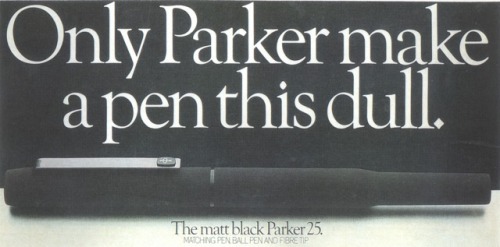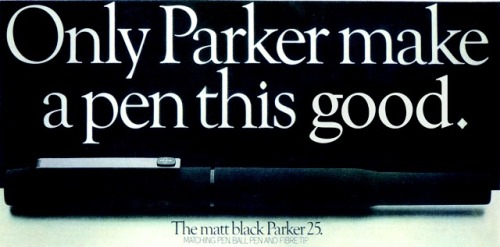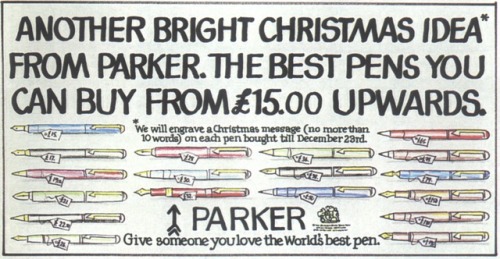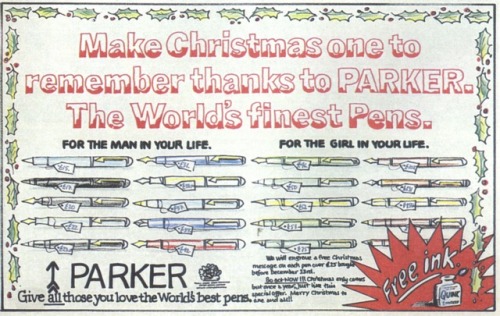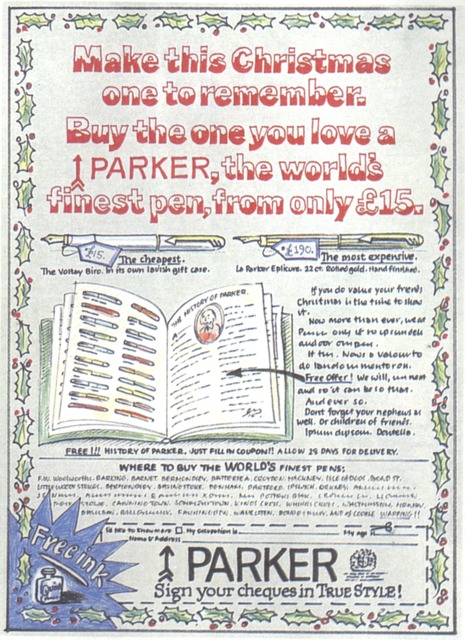Text:
At STIGA, we don’t just cater for the discerning domestic gardener we have designed and built machines to meet the needs of commercial operators, from contractors and estate managers, through to groundskeepers and professional landscapers. Powerful engines, advanced functions, ergonomics and high quality construction, STIGA machines are built from the ground up.
Established in Sweden in 1934, STIGA has more than 80 years of experience in producing innovative gardening products
To discover the complete range or to find your local STIGA dealer visit: www. stiga.com/uk
The target market
Who are you talking to? Ordinary consumers are one thing; you can be all clever and creative with them. But trade ads are different. If your ad is aimed at professionals, remember these are serious-minded people who don’t appreciate wit or subtlety. They’re also busy all the time so get straight to the point. Tip: why not list all the kinds of people you’re talking to in your copy?
The headline
It should be short, compelling and original. Failing that, the first idea that comes into your head will probably do. If it’s a cliche or a play on words, you can safely ignore that bit about avoiding wit. BUT make sure the reader knows you’ve employed a witticism by adding an exclamation mark.
The image
It could be a single, striking and entirely unexpected picture, something that really leaps off the page. OR, it could be straightforward and mundane. If you opt for the safe and dull route, remember that it needn’t even be a single image. Choose as many as you like. If your pictures have some sort of relationship to your headline all the better, but don’t try too hard. Or at all – it’s completely up to you. For example, the headline here talks about Stiga’s tools cutting EVERYTHING. But a quick look at the pictures shows them cutting grass, grass, grass, grass and some more grass.
The copy
The beginning of the copy is always the hardest part. So why not try something different and start with a negative? Tell the reader what you DON’T do before going on to say what you DO do.
Bear in mind that long opening sentences can draw the reader in. They invariably don’t, I’m just saying they can. As the reader negotiates his way through your four-line, 35-word sentence, remember that punctuation is your friend. But it can also be a right bitch to master. So if you’re unsure where to put a comma or full stop, just leave it out. Even the busiest professional will willingly invest his time in figuring out what you mean.
In an ideal world, your copy should expand on the theme established by the headline. Excuse me, did someone say ideal world?! It’s anything but that right now, so your copy can say anything you like. In the example shown here, the writer hasn’t provided a single example of how the manufacturer refuses to cut corners. (Although, oddly, the only photo of any note shows a STIGA machine doing precisely that.)
Avoid using words like derivative, old-fashioned and awkward. Today’s busy professionals expect to see words like innovative, advanced and ergonomic. No trade ad is complete without them.
Make sure you tell the reader the exact year your company was founded. (Month and day optional.) Then express its age in a slightly different way, to really drill the point home. Your country of origin is important too, especially if it’s hugely relevant to the product you’re advertising. Sweden and lawns? Maybe. No matter, bung it in anyway.
For your call to action, remember to include the www bit of the URL. No one can find anything on the web without it.
The strapline
Right at the start of the copy, it was established that ordinary domestic gardeners weren’t the primary audience for this advertisement. No, it’s the big boys STIGA are talking to here. They’re listed, remember? The groundskeepers and estate managers? So choose a tagline that talks directly to this audience.
Or, forget all that and use one that talks to ordinary domestic gardeners. It’s YOUR ad. You can do what you like.









